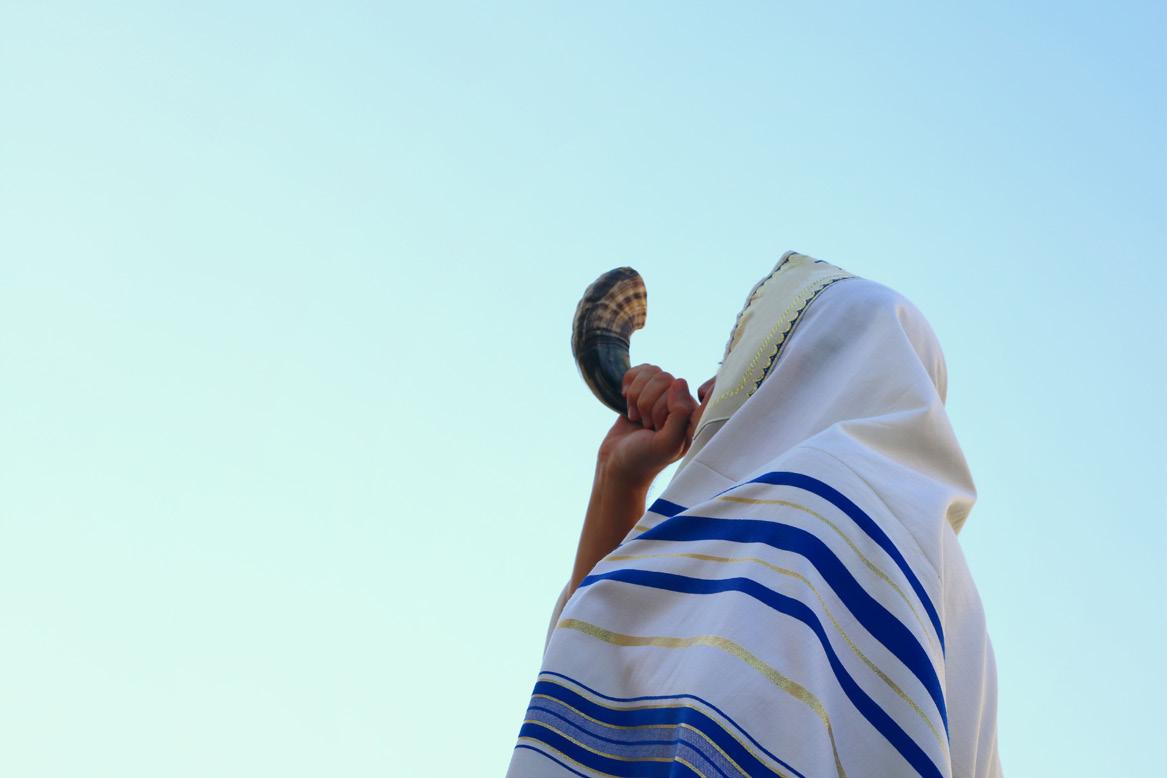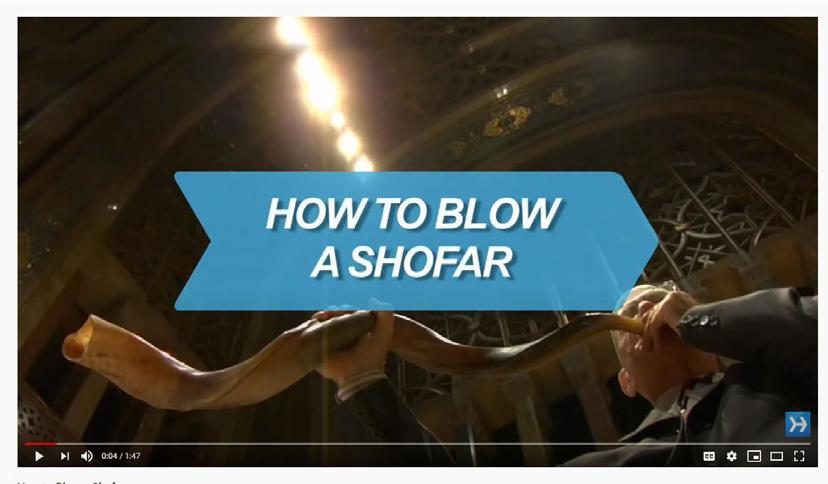
4 minute read
Seeing Green in the Shofar and Its Call to Action
(JTA Archive)
Is green the theme of the shofar this Rosh Hashanah season? In a time of sustainability and carbon footprints, high gas and hybrids, the shofar is the simplest, most eco-friendly method of reaching the Jewish community with a vital message.
The shofar, if you pause to think about it, is a rhapsody in green. Lightweight and easily transportable, it sports no moving parts — the shofar blower, or ba'al tekiah's, own mouth becomes the mouthpiece. Yet it’s dependable enough to deliver the complex musical message required to begin a new Jewish year.
A totally natural product, its availability is a byproduct of an already ongoing ancient enterprise — sheep herding.
Powered by one human, and empowered by a congregation, the shofar requires no batteries, power cord or transformer. When we hear it, we are the ones who become transformed.
An instrument conceived thousands of years ago, is by today's standards a near noise-free environment, the shofar still has the power to hold our attention. In urban and suburban settings, it competes against pagers, jet noise, sirens and car alarms, holding its own without mike, amp or speakers. Yet sans headphones or ear buds, the shofar delivers a sound like no other, penetrating our kishkas and our consciousness.
It's the great proclaimer, announcing in a low-energy way some high-energy concepts.
In Israel, the shofar's call also was used to introduce the Torah concept of the jubilee year: Historically, on Yom Kippur, the shofar announced that the land was allowed to lay fallow while also proclaiming liberty throughout the land and the release of all servants.
The jubilee in Hebrew, “yovel,” is derived from the Hebrew word for ram's horn — “yobel.” Yovel and the related concepts of shmitta, a Shabbat of rest and rejuvenation for the land every seven years, are land-use concepts practiced today through crop rotation and organic farming.
Each year we are commanded to hear the sounds of the shofar — we cannot celebrate Rosh Hashanah without hearing them. But what is it that we are supposed to hear?
The shofar, held high for us to hear and see that day, presents an under-heard and overlooked message: Jews, now and
in the future, will always need to have a relationship with the natural world, with the world of animals and their environment. A relationship that will need to run far deeper than what my daddy bought for two zuzzim, as the traditional Passover song “Chad Gadya” proclaims.
When issues of treatment of livestock to be used for kosher slaughter come to light, the sound of the shofar can remind us that the horn that announces the times of our lives comes from something that also was alive — an animal that must be sustained with compassion, with humane treatment, fed even before we feed ourselves.
We cannot beg the question of our treatment of animals by using an artificial shofar. Substitutes are not kosher — plastic and metal are not allowed. Also, shofars do not last forever. They crack, break and develop holes, rendering them ritually unusable.

The replacements, like all shofars, can only be fashioned from a ram, antelope, gazelle or goat. A world where the environment is so polluted — where there is no clean water, no toxin-free feed, no land available — will be a world that will not hear the blast of the shofar. On that day, Rosh Hashanah, Yom Teruah, the day of the blast, will be our “silent spring.”
In a midrashic moment we can imagine a Jewish traveler, a Rip ben Winkle who after a bit too much kiddush wine sleeps for 200 years and awakens in Elul, the month preceding Rosh Hashanah, only to find that the shofars are all made of carbon fiber — perfectly pitched with lustrous sheen — and practically play themselves. To what kind of world has our traveler awoken?
Like our traveler, at some point, we, too, must awaken, or be awakened by the shofar's call. According to the Mishneh Torah, the shofar says, “Wake up from your sleep. You are asleep. Get up from your slumber.”
This year as you stand to hear the blasts, wake to a green meaning in the tones:
Tekiah, the long blast: the wake-up call. Understand it to announce the stewardship we have been given over the earth and the responsibilities thereof.
Shevarim, three short blasts: a warning that change is coming. The crack, crack, cracking of polar ice due to gobal warming.
Teruah, nine quick notes like ticks of the clock: Reminding us that when it comes to the environment, the day is short and the task is great.
Saadia Gaon gave us 10 things we should hear in the shofar's call. He tells us that the sound of the shofar is reminiscent of the exhortations of the prophets whose voices rang out like a shofar in calling the people to do justice.
This Rosh Hashanah, we can be the prophets of change, shaping in short bursts and long beautiful curves and spirals, our actions and intentions to green and repair our world. (Edmon J. Rodman is a writer and toy designer whose most recent creation is Do-Re-Mi Musical Building Blocks.)


